Jun 19, 2025
Author:Amanda Lyu
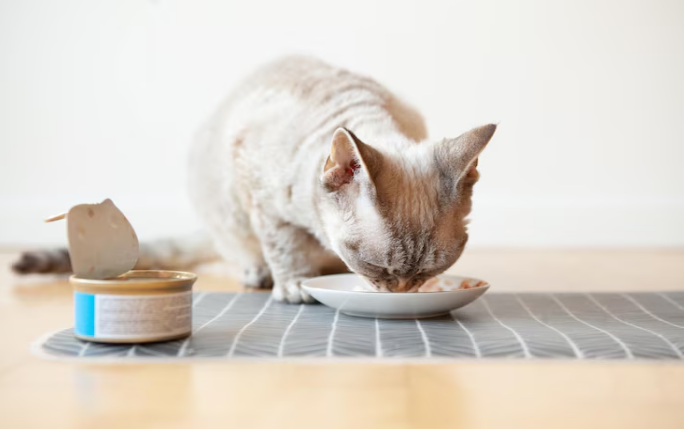
That smooth dollop of hummus? Looks fine—until you stop and really think about what’s in it. A lot of people assume plant-based means it’s automatically safe for pets. Makes sense... until it doesn’t. Chickpeas? No big deal. But then you’ve got garlic, onions, lemon juice, salt—yeah, that’s where it starts to go sideways.
Sure, one nibble probably won’t land your cat at the vet. But let it happen again—or include the wrong mix—and it’s not just an upset stomach you’re dealing with.
If your cat licks the bowl, paws at your plate, or sneaks a bite? Don’t shrug it off. Know what’s in play:
● What’s mixed into hummus that raises a red flag for cats
● Why does even a small amount of certain stuff cause real damage?
● The signs your cat’s system is reacting—some fast, some delayed
● Whether DIY hummus gives you any advantage over store-bought
This isn’t panic talk. It’s clear-headed, pet-first info. No dramatics—just what you need to know.
What’s Really Hiding in Hummus That Puts Cats at Risk
Hummus? Looks basic. Mashed chickpeas, splash of oil, pinch of seasoning—easy, right? But it’s the details that matter when you’ve got a cat around. The danger isn’t in the base—it’s all the extras.
Whether it’s homemade or something off the shelf, most recipes pull in ingredients that don’t sit well with feline biology. Some cause irritation. Others go way further.
1. Garlic
Garlic brings trouble fast. It’s got compounds—n-propyl disulfide, S-allyl cysteine sulfoxide—that go straight after red blood cells. Once inside, they mess with hemoglobin, forming Heinz bodies that signal the spleen to clear those cells out. That means anemia—red blood cells dying off faster than they’re made.
Symptoms can hit in a few hours or take days. You’ll notice:
● Pale gums
● Labored breathing
● Low energy
● Rapid heart rate
● Nausea or loose stool
And garlic powder? Way more concentrated than fresh. Just 0.5g per kg of body weight can push a cat into full-on toxicosis.
2. Onion and Onion Powder
Onions have thiosulfate. That compound tampers with G6PD, a red blood cell enzyme. Once that breaks down, oxidative damage kicks in fast, causing cells to rupture from the inside.
Cats don’t have the liver enzymes to handle this stuff the way dogs do. So the risk jumps.
What shows up?
● Hemolysis inside the blood vessels
● Hemoglobin leaking into the urine
● Low oxygen from methemoglobinemia
Even a gram of onion for a five-pound cat can trigger symptoms. Powdered versions? Way more potent.
3. Lemon Juice or Citric Acid
Citrus stuff—lemon juice, citric acid—doesn’t sit well with cats. It contains essential oils like limonene and linalool, plus that sharp acidity. But cats lack a liver enzyme that helps break it down. So it lingers.
Even small amounts may lead to:
● Mouth irritation
● Stomach inflammation
● Drooling or weird head shakes
● Loss of balance or signs of nervous system fatigue (if enough is consumed)
Packaged hummus often includes citric acid to preserve shelf life. But it also drops stomach pH, raising the risk of ulcers, especially in kittens or cats with liver issues.
4. Salt
Salt is fine for us. Cats, though, need it in micro-doses. AAFCO sets the limit at 16.7 mg/kg/day. Most store-bought hummus? Packs 120–200mg per serving.
Even a quick lick can overload a small cat’s system. Watch for:
● Dehydration signs
● Muscle tremors
● High thirst, frequent peeing
● Strained kidneys
● Spikes in blood pressure
Senior cats or those with heart problems? Salt makes their condition worse. Fast.
5. Tahini (Sesame Paste)
Tahini comes from sesame seeds. Energy-dense. Loaded with omega-6 fats. Not toxic—but not great, either.
Cats aren’t built to handle plant-based fats. They don’t have salivary amylase. Their intestines are short. The result? Fat lingers and causes problems.
Too much tahini can bring on:
● Pancreatitis (inflamed pancreas from fat overload)
● Fatty stool (undigested waste)
● GI mess: bloating, vomiting, diarrhea
For overweight cats or those with diabetes, tahini throws off their system even faster.
6. Oils and Spices
Oils like olive, canola, or generic blends show up in most hummus. Not toxic—but they’re heavy. They slow digestion, confuse enzyme activity, and can trigger vomiting or diarrhea.
Spices like cumin, paprika, and black pepper? They carry oils and alkaloids that inflame mucous membranes. Cats are extra-sensitive due to higher vomeronasal organ activity and limited detox enzymes.
Watch for:
● Mouth irritation
● Drooling
● Gag reflex
● Appetite drop
Even small doses can cause lasting irritation in a sensitive cat.
How to Spot Hummus-Related Reactions in Cats
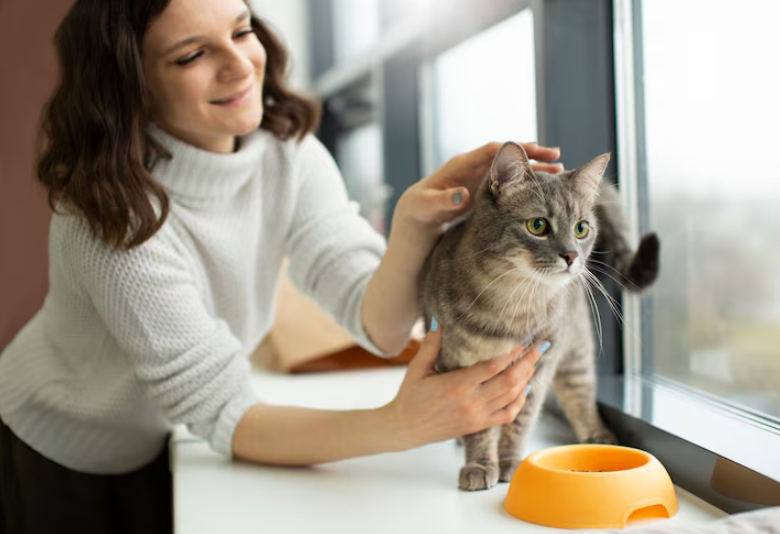
Cats don’t process food additives like we do. A bite of hummus might look like nothing, but inside, it stirs up all kinds of trouble. Some symptoms show fast. Others creep up. All of them matter.
What should you watch for?
Gastrointestinal Reactions
These come first. The body’s way of rejecting what doesn’t belong.
● Vomiting (often shows up within hours)
● Soft stool or diarrhea
● Too much drooling
● Avoiding food
● Bloated or tense abdomen
Neurological Signs
The more toxic compounds mess with oxygen flow, energy, and stability.
● Tiredness
● Weird posture or unsteady walking
● Muscle twitches
● In bad cases, seizures
Respiratory or Hematologic Red Flags
This is deeper damage to red blood cells and lung function.
● Blue or pale gums
● Quick breathing
● Fatigue after barely moving
● Yellowing of eyes or skin (jaundice)
Heart and Kidney Stress
Salt hits hard. It throws off hydration and organ function.
● Always thirsty
● Always peeing
● Heart racing
● Weak pulse or cold paws
● Sudden collapse
And don’t ignore behavior. Hiding, yowling, or suddenly going silent—all signals something’s off.
Why Homemade Hummus Isn’t Automatically Safer for Cats
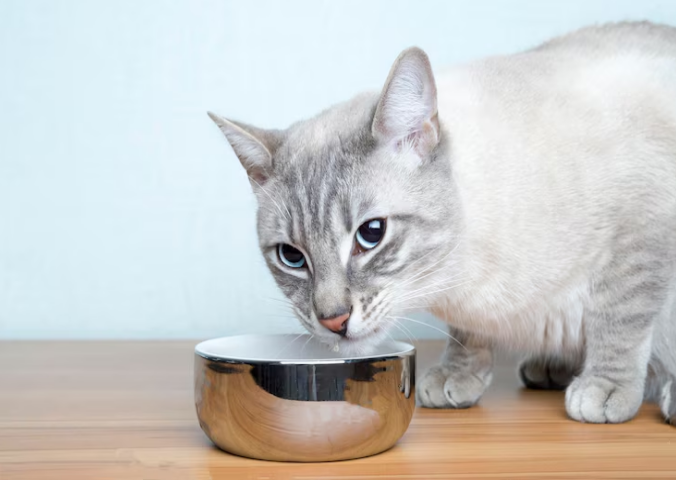
Making hummus from scratch doesn’t erase the risk. Unless you’re leaving out everything but chickpeas and water, you’re probably still adding something a cat can’t handle. Store-bought blends are worse. Preservatives. High sodium. Flavor additives. Stuff like citric acid or potassium sorbate keeps it fresh, but stresses a cat’s system.
You’ll find:
● Garlic or onion powders
● Too much salt
● Acidifiers
● Fats that cats don’t digest well
Homemade gives you control, but most recipes still call for lemon juice, tahini, and oil. Garlic’s often added by default—or it’s in the oil itself. Even tiny leftovers on utensils can trigger a problem. Stripping the garlic isn’t enough. The fats and acids still disrupt digestion.
Read Next: Can Cats Eat Cheese or Is It Doing More Harm Than Good?
How Smart Feeders Reduce the Risk Entirely
Want to keep cats away from foods they shouldn’t touch? Don’t wait for them to swipe a bite—cut off the chance completely.
That’s what smart feeders like WOpet are for.
They solve two key issues:
● Cats don’t loiter during meals, hoping for scraps
● Meals show up on time, in the right amount—no guessing, no begging
Predictable feeding kills curiosity. A fed cat isn’t desperate. That means fewer countertop jumps and fewer hummus incidents.
Can Cats Eat Hummus? Let Smart Feeding Fix the Guesswork
Hummus seems harmless. Smooth, beige, smells like garlic. But it’s made for people, not tiny carnivores with sensitive guts. Garlic and onion? They wreck red blood cells. Lemon juice? Rough on the stomach. Salt stacks up in the kidneys. And tahini? That fat load slows everything down.
A lick doesn’t always mean a meltdown. Still, their body notices. And once signs start—throwing up, tired eyes, gums that don’t look right—it’s already too late to take it back. Homemade, store-bought, it doesn’t change the risk. Both bring problems.
So, how do you skip the mess entirely? Control the access. Predictable feeding—same time, right portion—shuts down the need to hover near your plate. Cats stop begging when meals show up without fail. WOpet makes that part simple. No bells. No fluff. Just the kind of consistency that actually works.
Label:
Popular Post

What to Feed a Sick Dog With No Appetite? [2025 Guide]
May 16, 2023
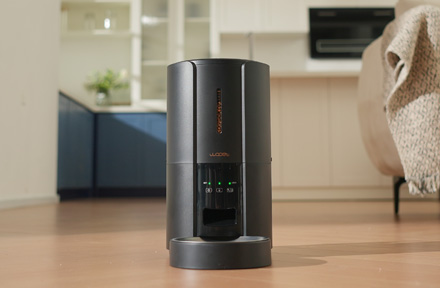
Troubleshooting Common Issues with Automatic Pet Feeders: Tips & Tricks for Pet Owners
Oct 26, 2023
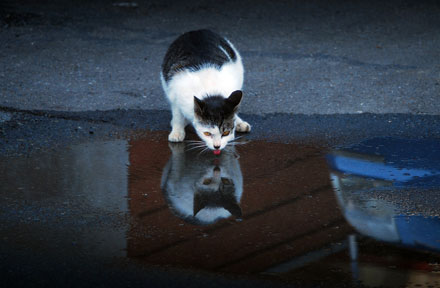
Why Does My Cat Cough After Drinking Water? 8 Potential Reasons
Mar 13, 2023
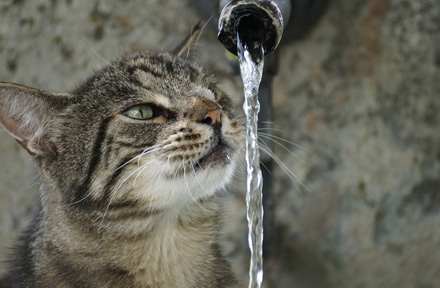
Why is My Cat Throwing up Water? Top 5 Causes Here
Feb 08, 2023
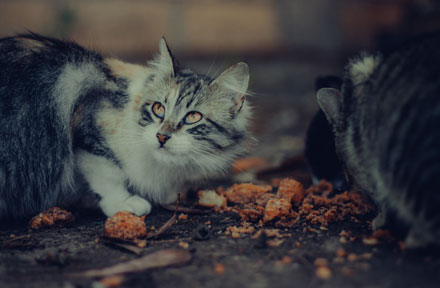
My Cat Only Eats A Little at A Time - What to Do?
Feb 27, 2023
$99.99
$129.99
Copyright © 2025 WOPET. All Rights Reserved.